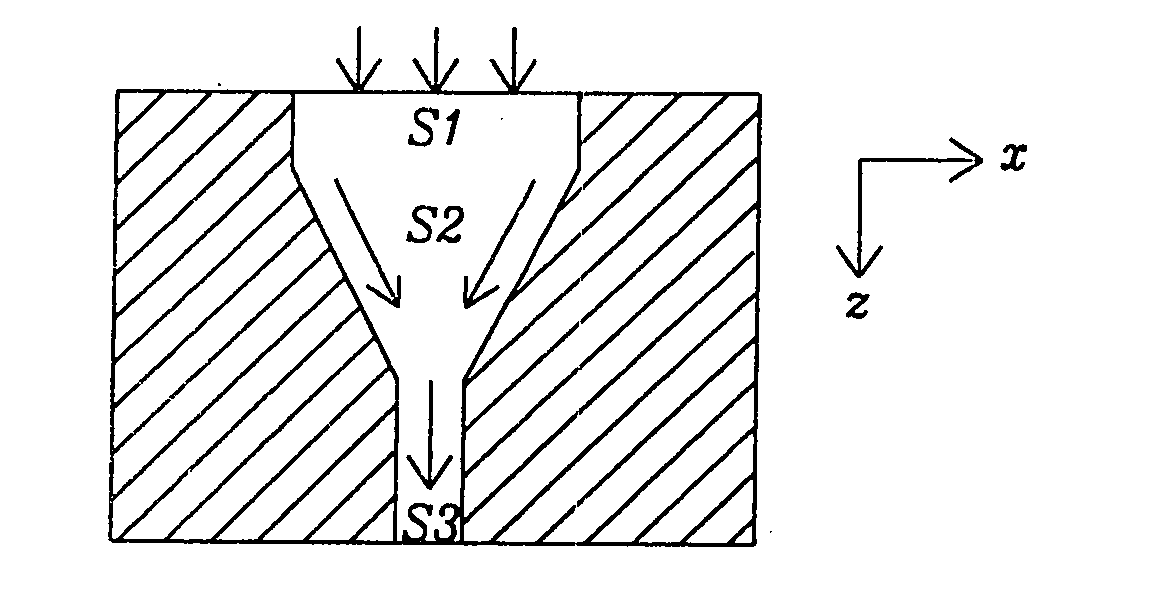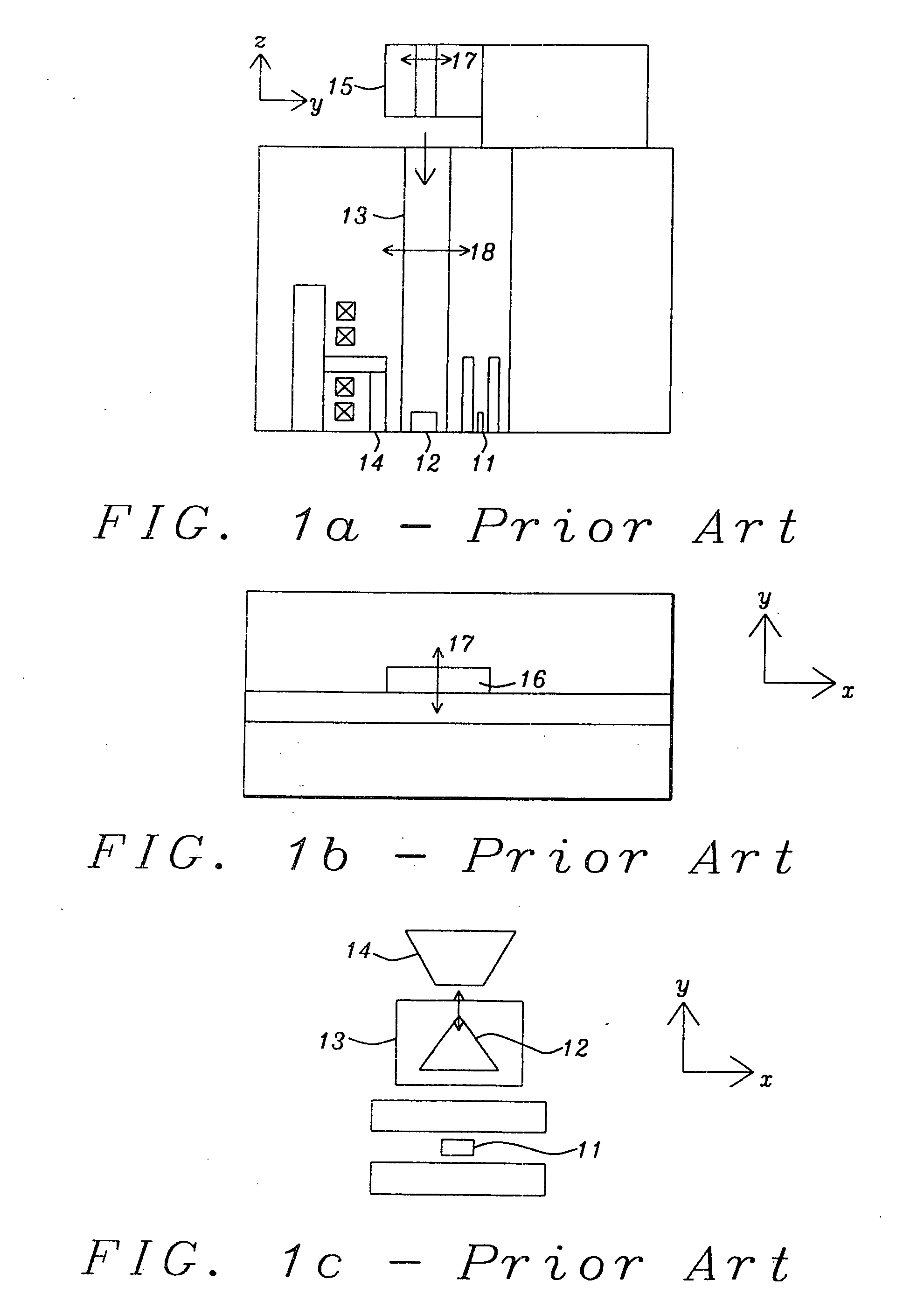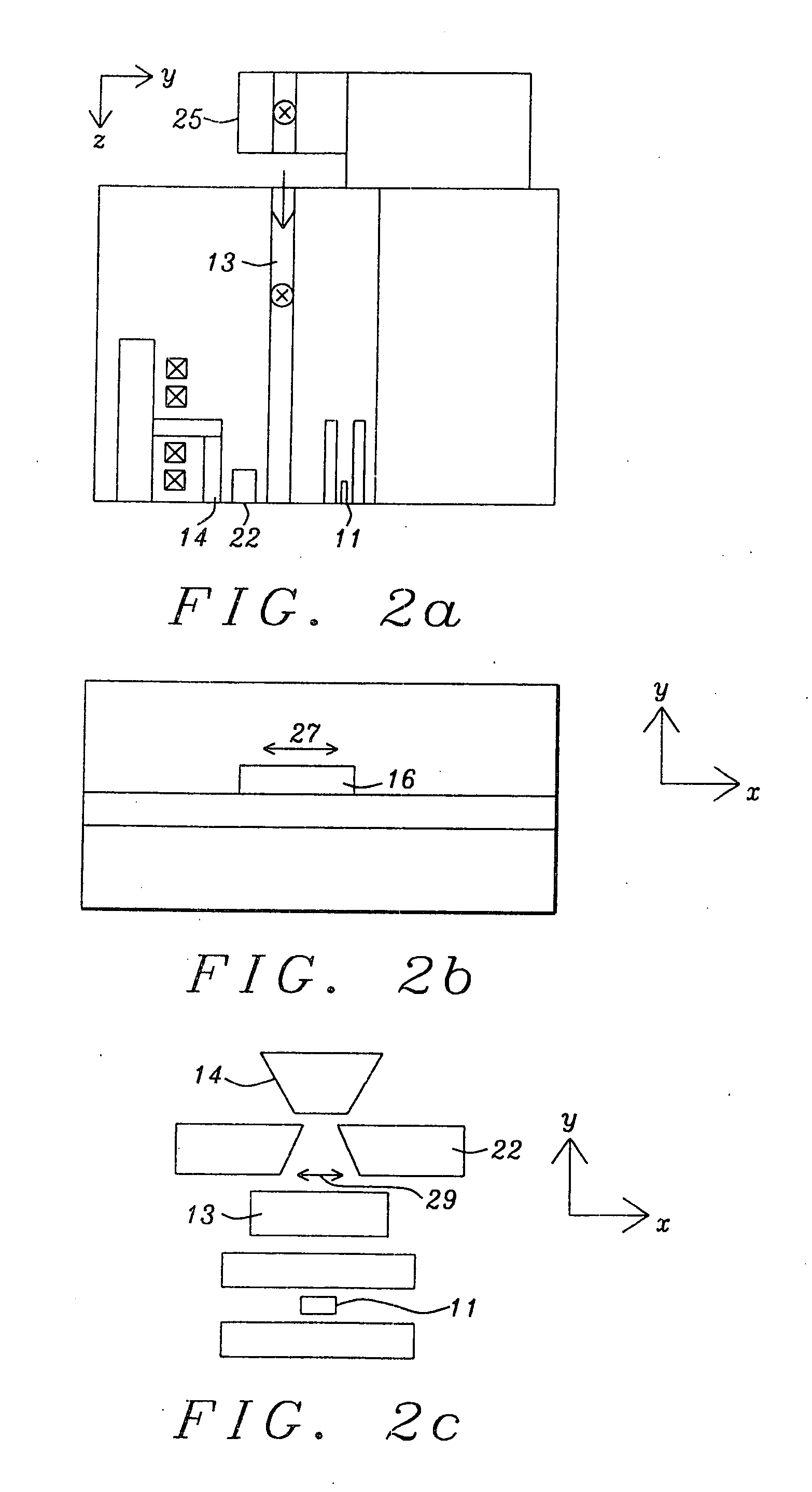3-D self-focusing gap plasmon generator for TAMR
a gap plasmon and plasmon generator technology, applied in the field of perpendicular magnetic recording, can solve the problems of limited coupling efficiency of wg light high cost of lds operating, and limited efficiency of wg light coupling into the edge plasmon mode, so as to achieve higher optical efficiency and reduce propagation loss
- Summary
- Abstract
- Description
- Claims
- Application Information
AI Technical Summary
Benefits of technology
Problems solved by technology
Method used
Image
Examples
embodiment 1
[0049]Embodiment 2 (FIGS. 9a-c) is the same as Embodiment 1 except that wave-guide 13 is recessed from the ABS so, in this configuration, coupling between Plasmon generator 22 and wave-guide 13 occurs where the two structures overlap.
embodiment 3 (figs.10a , 10b , and 10c)
[0050]Embodiment 3 (FIGS. 10a, 10b, and 10c) is the same as Embodiment 1 except that wave-guide 13 is not only recessed from the ABS, but is also located behind the entrance of Plasmon generator 22. In this configuration, the optical energy is directly coupled from the waveguide mode to the gap Plasmon mode.
DIFFERENCES AND ADVANTAGES
[0051]The main differences between the Self-focusing Gap Plasmon Generator of the present invention and the edge Plasmon generator of the prior art and their consequent advantages include:
[0052]1. Normally an Edge Plasmon generator needs a TM mode LD. This is a non-standard item and therefore expensive. However, the SGPG of the present invention can use a TE mode LD. This is readily available and therefore cheaper.
[0053]2. The SGPG has a three dimensional self-focusing shape while the EPG has a uniform cross section. Because of this, the SGPG has the following advantages:
[0054](i) Improved optical efficiency due to the better coupling efficiency of the W...
PUM
| Property | Measurement | Unit |
|---|---|---|
| separation distance | aaaaa | aaaaa |
| area | aaaaa | aaaaa |
| data density | aaaaa | aaaaa |
Abstract
Description
Claims
Application Information
 Login to View More
Login to View More - R&D
- Intellectual Property
- Life Sciences
- Materials
- Tech Scout
- Unparalleled Data Quality
- Higher Quality Content
- 60% Fewer Hallucinations
Browse by: Latest US Patents, China's latest patents, Technical Efficacy Thesaurus, Application Domain, Technology Topic, Popular Technical Reports.
© 2025 PatSnap. All rights reserved.Legal|Privacy policy|Modern Slavery Act Transparency Statement|Sitemap|About US| Contact US: help@patsnap.com



